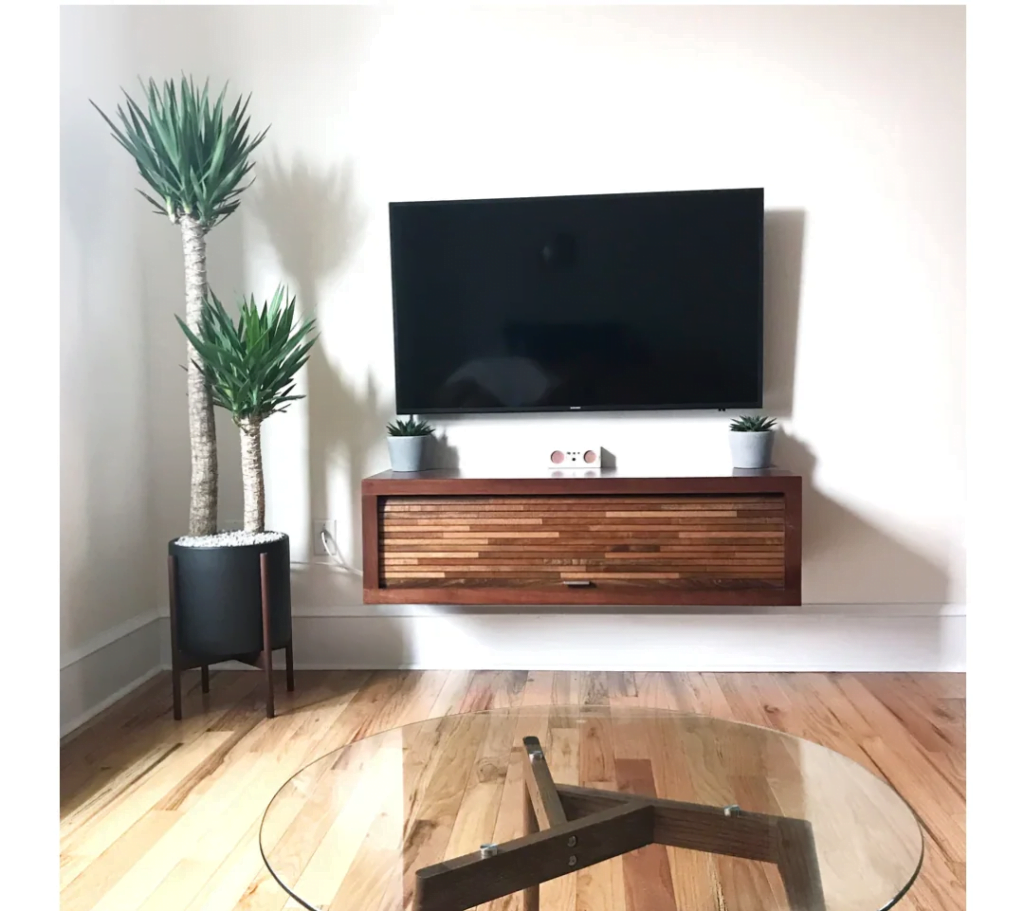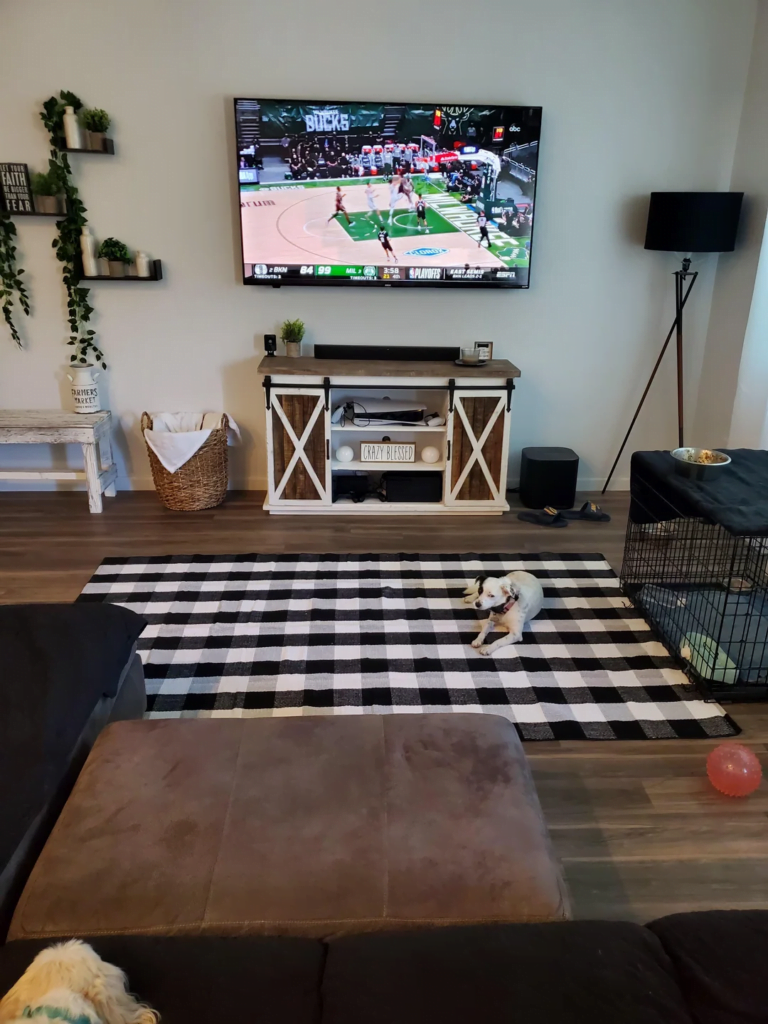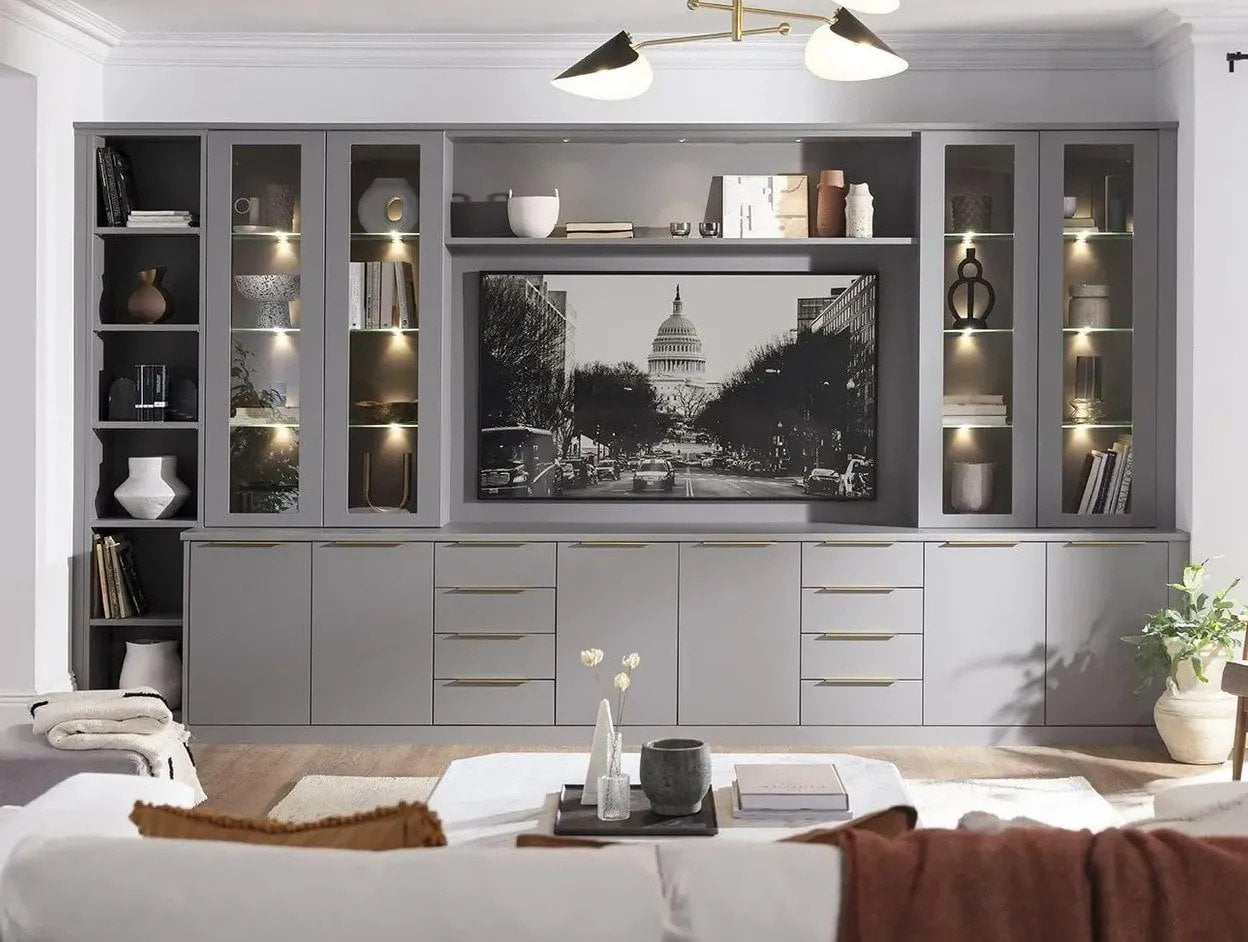In today’s era of ever-expanding television screens, it’s not uncommon to find oneself in a bit of a spatial problem: a TV that dwarfs its stand. While seemingly trivial, this scenario poses an aesthetic challenge and a potential safety risk. The sight of a sleek, modern television precariously perched on a stand that’s too small can be disconcerting.
Moreover, the risk of the TV toppling over cannot be overlooked. This article delves into the nuances of managing a situation where your TV is larger than its stand, guiding you through the considerations and solutions to ensure an appealing and safe setup in your living space.
Understanding the Challenge

The mismatch between the size of TVs and their stands often stems from the rapid evolution in television technology. As screens become slimmer, the frames that once seemed adequate can become undersized. This size disparity is more than just a matter of aesthetics; it raises real concerns about stability and functionality.
The risks range from minor inconveniences, like the TV overhanging the edges of the stand, to serious safety hazards, such as the potential for the TV to fall if accidentally nudged. Understanding this challenge is the first step towards finding a viable solution, ensuring your entertainment setup is safe and visually pleasing.
Key Considerations

Weight and Support
The weight capacity is the foremost consideration when placing a large TV on a smaller stand. The stand must be capable of supporting the TV’s weight without any risk of collapsing. This aspect is crucial, as overlooking it could lead to disastrous outcomes, including damage to the TV and stand, or worse, causing injury to people and pets in the vicinity. It’s essential to check the manufacturer’s specifications for both the TV and the stand, ensuring that the latter can handle the weight of the former with a margin for safety.
Width and Balance
Another critical factor is the width of the TV relative to the stand. While modern flat-screen TVs being wider than their stands is a common sight, extreme differences in width can pose a tipping hazard. The issue isn’t merely aesthetic; a TV that significantly overhangs the edges of its stand is more prone to tipping, especially if accidentally bumped. This risk is heightened in households with children or pets, where accidental nudges are more likely. Therefore, it’s vital to assess the overall width and how balanced the TV is on the stand.
Placement in the Room
The TV placement and stand within the room also warrant careful consideration. Ideally, positioning the TV against a wall offers the most stability, especially if the TV is wider than the stand. This setup minimizes the likelihood of the TV being knocked over from the sides. Conversely, placing a disproportionately large TV on a small shelf in a central or high-traffic room area amplifies the risk of accidents. It’s important to assess the everyday movement patterns in the room and position the TV accordingly, ensuring that it doesn’t obstruct pathways or become a safety hazard.
Safety Measures and Precautions

Implementing safety measures is paramount when dealing with a TV that’s larger than its stand:
- Ensure the rack is placed on a level surface to prevent uneven weight distribution. Use your perspective to stabilize the unit if it has any adjustable feet.
- Consider using anti-tip straps or brackets to secure the TV to the frame, adding an extra layer of safety. These are especially crucial in homes with children or pets, where the risk of a TV being knocked over is higher. Also, regularly check for any signs of strain or bending in the stand, as these could be precursors to a potential collapse.
- Avoid placing heavy items or additional accessories on the stand that could exceed its weight capacity.
Alternative Solutions
Mounting the TV on the Wall
Wall mounting is an excellent alternative for TVs larger than their stands. This method saves space and significantly reduces the risk of the TV tipping over. Before mounting, ensure your wall can support the TV’s weight and use a mounting kit that matches the TV’s size and weight specifications. It’s advisable to seek professional assistance for installation to ensure it’s done correctly. Wall-mounted TVs offer a sleek, modern look and can be positioned at an optimal viewing height.
Choosing a Larger Stand
If wall mounting isn’t feasible, purchasing an appropriately sized stand for your TV is a sensible option. When shopping for a new perspective, look for one that exceeds the width and weight of your TV to ensure stability and balance. Consider stands with additional storage space for accessories, which can help streamline your entertainment area. Also, think about the style and color of the frame to ensure it complements your room’s decor.
Temporary Measures
When immediate action is needed, placing the TV directly on the ground can be a temporary measure. This reduces the risk of the TV falling, but it’s not ideal for viewing ergonomics or aesthetics. If you opt for this approach, ensure the TV is positioned against a wall and out of high-traffic areas to prevent accidental damage. This solution should be used only until a more permanent and safe setup can be arranged.
Considerations for Future Purchases

Careful planning is key to prevent the issue of a TV being larger than the stand in the future. Before purchasing a new TV or stand:
- Measure the dimensions of both meticulously.
- Consider the potential growth in TV sizes and opt for a stand that can accommodate larger models.
- Pay attention to the weight capacity of the stand, ensuring it can support heavier TVs.
It’s also wise to consider the layout of your room and how a new TV or stand would fit within that space. By planning, you can ensure that your entertainment setup remains safe and aesthetically pleasing for years.
Conclusion
Navigating the challenge of a TV larger than its stand requires a balance of safety considerations, aesthetic preferences, and practical solutions. Whether it’s through securing the existing setup, opting for wall mounting, purchasing a larger stand, or employing temporary measures, there are various ways to address this issue. Looking ahead, careful selection, and planning when buying new TVs or stands can prevent this mismatch. Ultimately, the goal is to create a safe, functional, visually appealing home entertainment space.

